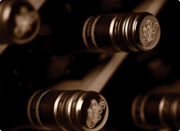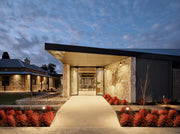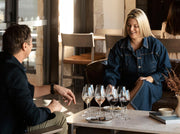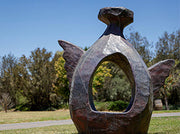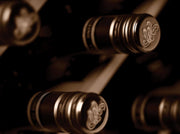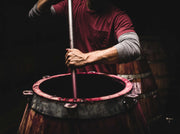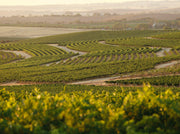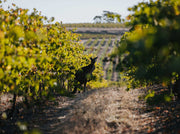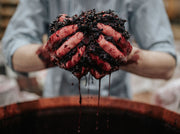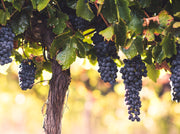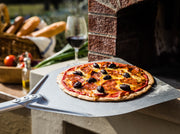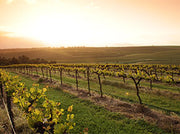10 Tips for Maximising the Enjoyment of Your Wine
Wine isn’t just a beverage, it’s an experience. But getting the most out of your wine requires more than just popping a cork. Whether you’re a seasoned pro or an occasional drinker, here are 10 tips that’ll help you maximise your enjoyment.
1. Nail your food pairing
Pairing wine with food is an art. When done right, my gosh it’s glorious. The key is to match the weight and intensity of the wine with the dish. For example, a delicate white like sauvignon blanc pairs beautifully with light seafood dishes, while a bold red like shiraz stands up to a hearty steak. Neither the wine nor the food should overpower the other, so always keep front of mind. I also like to consider the profile of the white and use that as a reference point, say an aged pinot displaying earthy characteristics may pair perfectly with, say, a mushroom risotto. Balance is another consideration. Highly acidic wines, for example, help to cut through fatty dishes such as pork belly, while highly tannic wines are the perfect accompaniment to foods that are rich in flavour, such as duck. Heavier dishes help to balance the bitterness of the tannins.
2. Serve wine at the right temperature
Temperature has got to be one of the most important things when it comes to maximising the drinking experience. Serving wine too cold can mute its flavours, while serving it too warm can make it taste overly alcoholic. As a general rule, white wines should be served chilled, but not too cold—think around 7-12°C. Reds, on the other hand, should be served slightly below room temperature, around 15-18°C. Sparkling wines and champagne, my favourite, are best served straight from the fridge! Drink them cold.
3. Choose the right glassware
For many people, the idea of having a different glass for each varietal is overkill. For those who have taken the plunge, they’ll now never be able to go back to the days of generic glassware. Wine glasses are designed to enhance the aromas and flavours of different types of wine. For example, a large, round bowl is ideal for red wines because it allows those big, bold flavours to breathe and develop. A narrower glass, on the other hand, works best for white wines to preserve their crispness and emphasise their aromatics. So while this feels a little wanky, investing in a few different types of glasses can really elevate your wine experience.
4. Surround yourself with good company
This probably feels like a given, but never underestimate the power of the moment and the influence it has over the wine you’re drinking. I’m sure you’ve been to a wine tasting or ordered a particular bottle at a restaurant, only to revisit that exact wine at a later date and thought “that wasn’t as good I remember?” or perhaps it was better than you recall? This is because the company we share wine with, influences the way we enjoy and remember it. We attach memories to wine; how we felt; where we were; the food we ate; the laughter we shared, all of it is wrapped up in that one bottle. So never underestimate the power of good company.
5. Store wine properly
Proper storage is key to ensuring your wine remains at its best. If you’re not planning to drink a bottle right away, keep it stored in a cool, dark place with a consistent temperature. Avoid exposing wine to direct sunlight or fluctuating temperatures, and if you have an open bottle that you’re not planning to finish, re-cork it and store it in the fridge. White wines can last up to five days in the fridge, while reds are best consumed within three days.
6. Let wine breathe
Letting your wine breathe can work wonders, particularly with reds. When wine is exposed to air, it begins to open up, releasing its aromas and softening any harsh tannins. For younger, full-bodied reds like cabernet sauvignon or syrah, decanting can be especially beneficial. Simply pour the wine into a decanter and let it sit for about 30 minutes before drinking. You’ll notice a difference in both the aroma and taste.
7. Serve in the right order
If you’re enjoying more than one wine in a sitting, the order in which you serve them matters. Start with lighter wines, like a sparkling blanc de blanc or a crisp sauvignon blanc, and progress to heavier, more intense ones, like a full-bodied shiraz. This’ll make sure your palate isn’t overwhelmed too early in the tasting. And when it comes to dessert wines, save them for last—their sweetness can easily overpower other flavours.
8. Experiment with different regions and varietals
Come on, don’t be boring. While it’s easy to keep reaching for your favourite bottle, exploring different regions and varietals can open up a whole new world of flavours. So be adventurous, chat to your local wine merchant and let them expand your horizon.
9. Pay attention to vintages
Look, we’re getting down into the weeds a little here, but if you’re an avid wine lover this is definitely worth considering. Wine is a product of both its environment and the year it was made. Some vintages are better than others due to varying weather conditions during the growing season. A hot, dry year might produce bold, concentrated wines, while a cooler year might result in wines with higher acidity and more finesse. Learning a bit about vintages can help you choose wines that are at their peak—and avoid those that might be past their prime.
10. Mindful sipping
Don’t guzzle, savour the moment. Wine isn’t something to rush through, it’s meant to be enjoyed slowly and thoughtfully. Take a moment to appreciate the colour, swirl the wine in your glass to release its aromas, and take in the bouquet before your first sip. When you do take a sip, let the wine linger on your palate and see what flavours emerge. If you’re with mates, discuss what you can taste. This mindful approach not only enhances your appreciation of the wine but also turns each glass into a mini experience.


